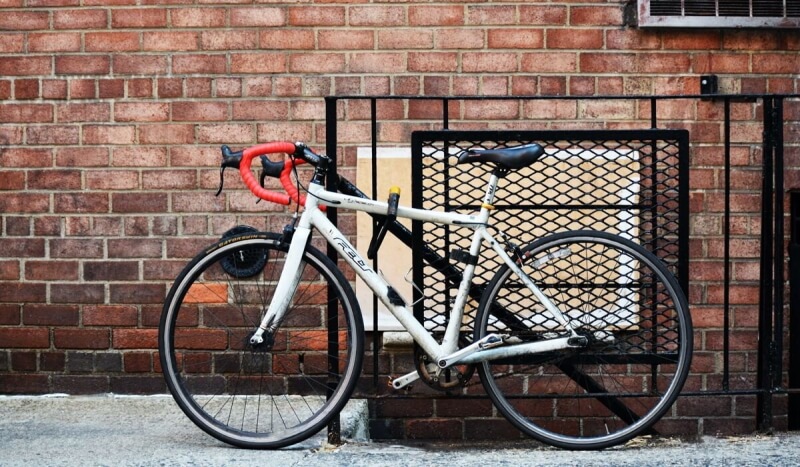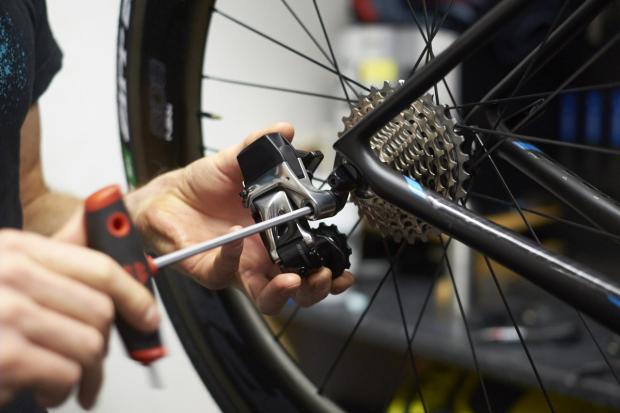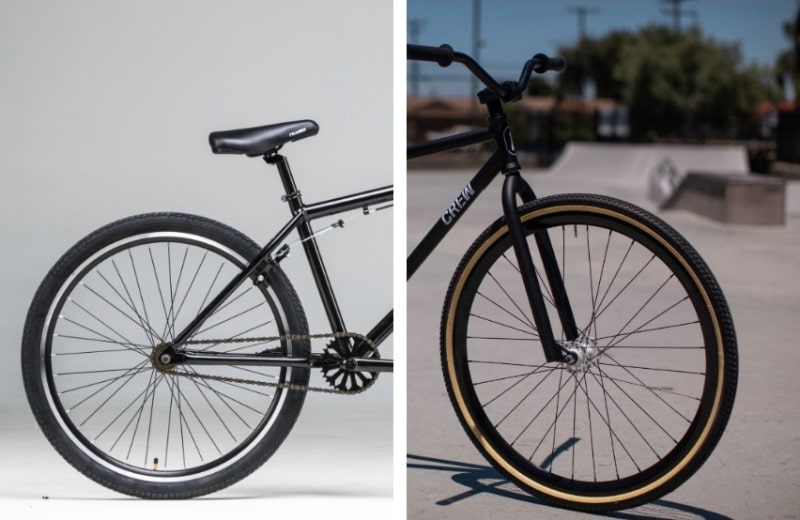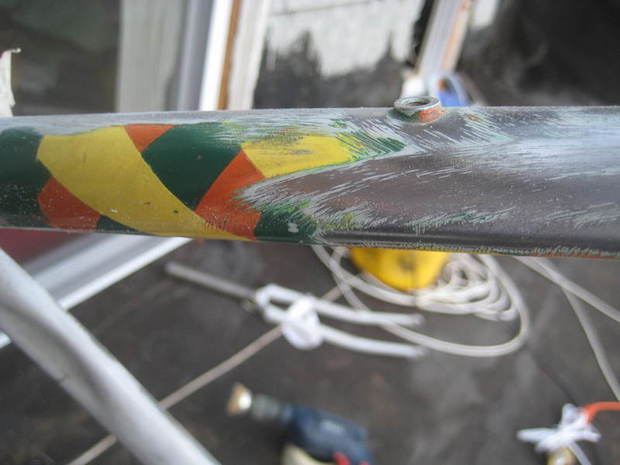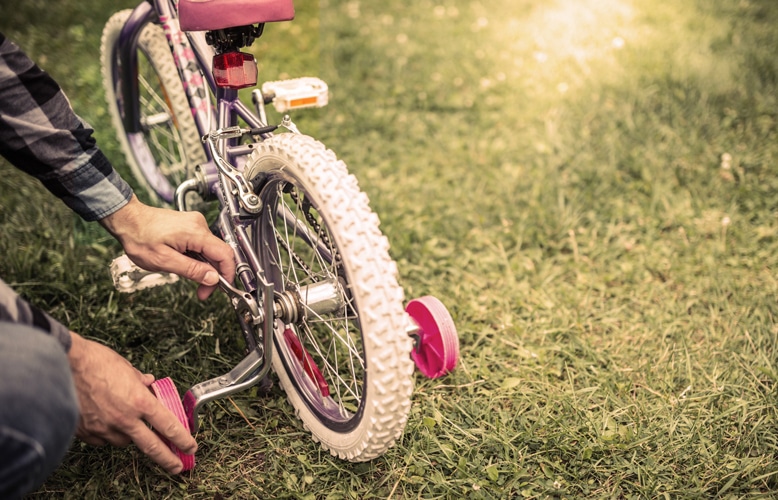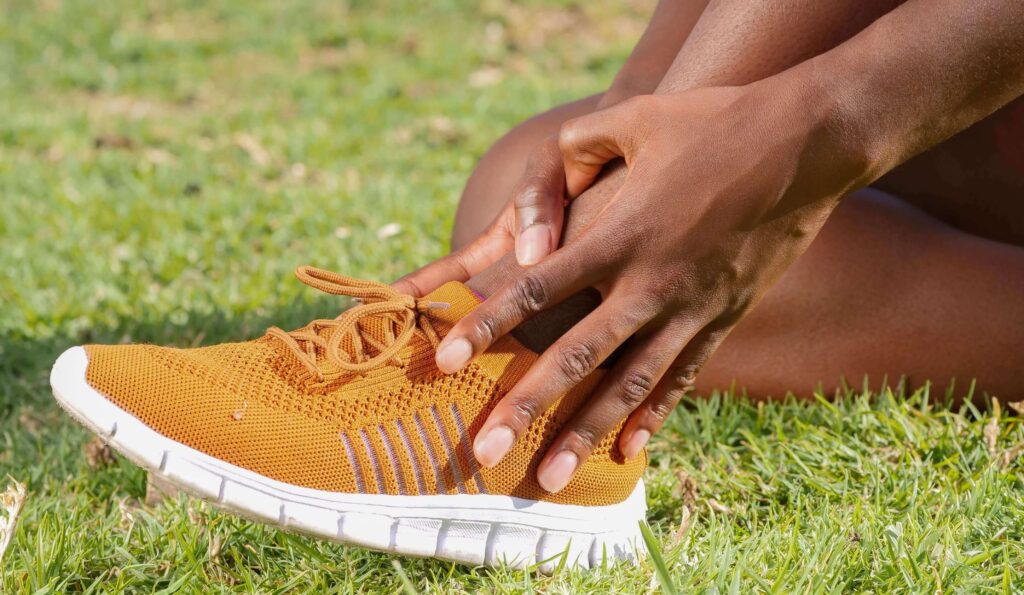- Trails
-
Bikes
-
Gear
-
Tips & Tricks
-
About us


Riding a bike is easy and enjoyable if you have perfect bike gears, but when your bike won’t change gears, you won’t have a fantastic ride. And it can be very frustrating when you don’t know how to fix them and there is nobody around to help you.
However, a silent and smooth-running transmission with a bike that has perfect gears can turn everything around. This is why it is paramount that you learn how to fix bike gears to have the best riding experience at all times. Also, knowing how to fix bike gears shifters allows you to switch your riding speed depending on the terrain you are on.
So, in this post, we will discuss everything you need to know on how to fix bike gears that won’t shift, how to fix bike gears that slip, and associating cases like how to fix slipping chains and bent rear derailleur hangers.
There are several types of bikes and the mechanisms used in making each of them are different, which thereby influences the choices of riders. As some people opt for the best steel gravel bikes because of the fantastic features they have, some riders opt for the best BMX bikes under $300 or the best road bikes under $1500 because of their prices. These bikes, including their gears, are designed in different ways. Some are more sophisticated than others, which makes their maintenance cost to be higher.
Bike gears are connected to a lot of components. In fact, they function in a systematic way; tightening the chain and stiffening the pedals. So, if you want to fix your bike gears, the cost will be determined by the nature of the problem i.e., all the connected parts will have to be examined to know the severity of the problem.
On an average, the cost to fix bike gears is usually somewhere between $10 and $40 per component. The cost varies depending on the type of bike and the gear problem you have.
Yes, you can adjust them on your own. However, there are different types of bikes, which make it imperative that you know the complexity of your bike before you make a purchase. For instance, how to fix bike gears on a mountain bike is different from how to fix bike gears on a road bike. This is because the terrain they are built for are different, thus the difference in their designs.
However, with good gears, you would have a fantastic ride; they influence the speed and smoothness of your ride. And according to most riders, using a MEGHNA Speed Lever Twist Shifter also, allows you to enjoy your ride more as it gives you a more comfortable grip and minimizes fatigue in your hands.
Shifting issues are always annoying, and they can even damage your bike or cause an accident. Described below are some of the reasons why bike gears won’t shift.
Below are the most common reasons of bike gears not shifting properly.
The derailleur Trusted Source Derailleur - Wikipedia A derailleur is a variable-ratio bicycle gearing system consisting of a chain, multiple sprockets of different sizes, and a mechanism to move the chain from one sprocket to another. en.m.wikipedia.org is one of the important parts that affect the functionality of bike gears and knowing how to properly adjust it could help you fix, or at least diagnose your gear problem. If you are experiencing persistent clicking while riding, inconsistent shifting, or if you can’t shift into some gears on your cassette, the issue could be with the derailleur.
Sometimes, the problem of your bike not shifting gears could be caused by the cable. To figure out what’s wrong with your cable, look at it from the front of your bike where it connects to the shifter levers, then to the back where it links to the derailleur. The cable that moves your derailleur when you shift may be restricted if your housing has a significant twist or pinch. Therefore, if you find any damage, you will have to replace the housing and the cable.
Also, the derailleur bending i.e., where the cable is fastened with a bolt, is a usual area for the cable to fray, and you may be unaware of the issues inside the frame if your bike has internal cable routing. So, to fully fix the issue, you may need to replace the cable and the housing.
The limit screws on the derailleur are there to control the range of the derailleur (they prevent the derailleur from moving too far inward or outward from the cassette and spokes).
If the limit screw is set too high, it will be too tight and it will restrict the chain from moving to the largest gear. A similar problem occurs if the limit screw is set too low; it will be too tight, and the chain will be restricted from moving to the lowest gear.
Chain wear, often known as “stretching,” occurs naturally as you ride. Every ride wears down the rollers and pins that hold your chain together, and this is accelerated when riding in unfavorable weather conditions.
The inside components of the chain, like the rollers and rivets, begin to wear down, thereby causing the chain to stretch. As a result of the wear, the chain may become misaligned with the gears, resulting in poor shifting.
On the other hand, your gear may refuse to shift because your bike chain is dirty. The chain and drivetrain are the dirtiest part of a bike Trusted Source Bike Chain Cleaning and Maintenance | REI The chain and drivetrain are typically the dirtiest parts of your bike, and this dirt is bad news for bike longevity and performance. www.rei.com , and this dirt affects the overall performance of the bike. You should make the effort to always clean, degrease, and lubricate your bike chain every now and then.
To fix bike gears, you need a couple of tools. They are:
Before fixing any part of your bike, you must make sure that you understand the requirements stated by the Consumer Product Safety Commission as it will help you get the best use of your bike.
When it comes to adjusting your bike gear, getting the appropriate angle is crucial as is rotating your wheels without moving the bike. Before doing any leg work or modifying bike gears, you must first get a bike stand and properly position your bike on it. You must be able to freely spin the wheels while the bike is stationary. Using a bike stand is the best way to do this and according to bike professionals, the Bikehand Bike Repair Stand is most preferable.
The second step on how to fix slipping bike gears is to identify the location of the bike derailleurs. There are two of them (the rear derailleur and the front derailleur) and they are in charge of moving the gears on the bike and keeping the chain in place. You must locate both of them and make sure that they are clean and free from any unwanted components like leaves, mud, and stones. These particles can obstruct your derailleur from functioning properly, which leads to your bike not shifting gears.
In this step, you have to test each gear to diagnose where the shifting problem location is. Pedal the bike using your hand. Begin with the back derailleur and gradually increase the speed of each gear. This will tell if your bike won’t shift to the highest gear front.
At this stage, you will know the gears that are hard to shift, and this can be caused by the chain slipping off the gear wheel. To fix this, turn the gear wheel twice to get it in the right place. After that, move to the front derailleur and repeat the process.
Tip: When you’re working on one derailleur, make sure the other one is in the middle gear. This prevents your chain from overstretching and getting damaged.
To find the adjusters, identify and follow the cables that lead to the derailleurs. Adjusters are like mini nuts around the cables. Every cable has two adjusters – one for the derailleur end and the other for the handlebars. Make sure that the adjusters are in good working order.
By now, you must have noticed the faulty gear. Keep an eye on the gear wheel by pedaling the bike with your hand. Then, raise the gear wheel to see the real problem. It might be that the chain is stuck, or the gear is skipping. Leave your bike on that gear and move on to the step that follows.
If you notice that shifting is hard when lowering the gear, turn the cable adjuster anticlockwise. This will help to gradually loosen the cable adjuster. Keep on doing this until the chain falls into the proper gear wheel.
Keep the adjuster tight if the shifting is difficult after leveling the gear. To tighten the cable adjuster, keep on rotating it clockwise until the chain turns to the proper gear.
Do a pre-ride inspection Trusted Source How to Do a Pre-Ride Bike Inspection | REI Whether you’re a new cyclist or a seasoned rider, it’s always a good idea to inspect your bike before a ride to make sure it’s in good working order. Some things — like the ABCs (Air, Brakes, Chain) below — should be checked before every ride; others may be checked less frequently. www.rei.com on all the gears to see if the shifting is smooth. Make sure that the derailleur shifts smoothly with each gear turn. You can remove the bike from the bike stand if the result is satisfactory.
The last step on how to fix skipping bike gears is to go on a short practice test to be sure that the bike gears are in good condition. With your weight on the bike, you would be able to test the shifting gears properly.
The video below shows the whole process of fixing shifting problems.
Slipping or limited bike chains are one of the associated cases with bikes that won’t shift gears. Described below are some of the reasons why you have slipping or limited bike chains.
There can be different reasons behind the slipping or limited chain. Check them out below.
Hard cycling for long periods of time causes the chain to stretch and destroy the inner rollers. When pedaling hard, the front chainrings begin to slip over time.
Incompatible drivetrain parts can cause your bike chain to keep falling off. The chain must be properly sized with no tightness or looseness in relation to the drivetrain components, particularly the rear derailleur
If you forget to replace your chain at the correct time, you’ll destroy your drivetrain components by causing damage to the teeth of the cogs on both the cassette and the chainrings. And when you eventually fix a new chain, it will slip in the front chainrings and back cassette, causing the chain to slip again.
The limit screws on both the front and rear derailleurs keep the chain from falling on both sides of the cassette. Not adjusting the screws properly is a common cause of a slipping chain.
To fix slipping or limited chains, you need a couple of tools. They are:
This is the same with the steps taken on how to fix stuck gears on a bike. Get a bike stand, and position your bike on the stand properly, so that you will be able to spin the wheels without the bike moving.
The lowest gear on the rear derailleur is the small one furthest from the bike, while on the front derailleur, it’s the small gear that’s close to the bike.
Tip: Change the gear on the derailleur you’re not working on to the middle.
The end of the cable that connects your handlebars to your derailleur is where you’ll find this. A tiny bolt secures the cable in place with a clamp. Unscrew the bolt with an Allen key.
In order to keep your chain from slipping off, the derailleur is restricted to the small area between the gears. The derailleur is held in place by two small screws that are situated adjacent to each other.
In order to prevent the chain from slipping, tighten the screws. If the chain is slipping near the outer cogs of the front derailleur, tighten the screw towards the left, usually labeled “H screw.” And tighten the screw towards the right, usually labeled ‘L screw” when the chain comes closer to the wheel.
Use your hand to push the rear derailleur into the bike as far as possible. The chain will slip if the derailleur is pushed too much. Alternatively, it could not push far enough, preventing the chain from reaching all of the gears. The limit screws can then be adjusted to move the derailleur, and you’ll be able to see it move.
The front derailleur should be adjusted such that the derailleur plates are on either side of the chain.
Shift back to the smallest gears and pull the cable taut by hand – it doesn’t have to be perfect. Then, replace the cable beneath the bolt on the derailleur you pulled it from.
Check that your bike can shift smoothly into and out of each gear in the front and back, and use your cable adjusters to make any necessary adjustments.
Check out the video below for more tips and instructions.
A bent derailleur hanger is one of the associated cases with bikes that won’t shift gears. Described below are the tools and steps you need to replace it.
Observe the chain line as it passes over the cassette and between the upper and lower jockey wheels from behind the bike. They should all be in a straight line, and if they are not, you’ll need to replace the hanger.
The most typical misalignment is towards the wheel, but outward misalignment is also possible.
Take off the back wheel. Then, take the derailleur off the hanger and place it on the chain.
Remove any bolts that link the hanger to the frame, being careful not to lose them.
To fix your new hanger, reverse the process, double-check your limits and indexing, and you’re ready to go.
Bike gears are very essential to having a hassle-free and smooth ride. It’s also crucial to know how to fix bike gears that won’t shift in case something goes wrong. In this post, we’ve discussed everything you need to know on how to fix bike gears, starting from the possible reasons why they could be faulty, the tools needed, and the step-by-step processes to provide a remedy.
Hopefully, after reading through, you won’t be frustrated because of a bad bike gear nor will you be involved in an accident or have a bad riding experience because your bike won’t change gears.
